

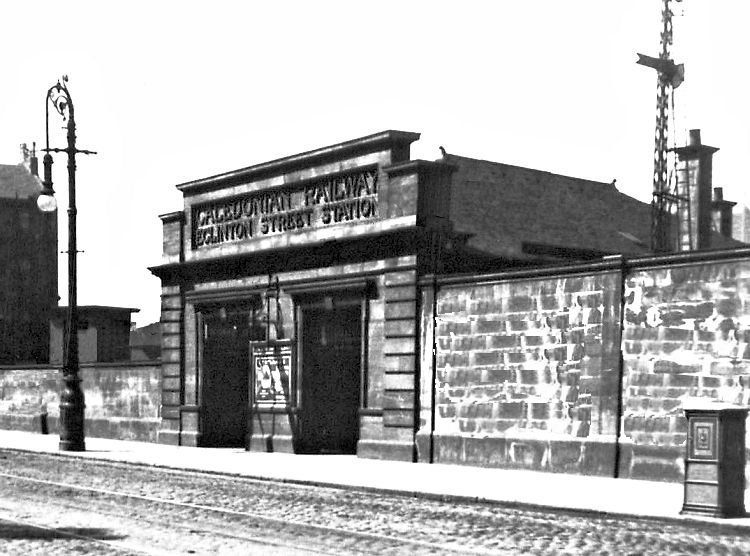
The Caledonian Railway's Eglinton Street Station opened on 1st July, 1879, a month before the trains were able to cross the River Clyde to the new Glasgow Central Station. The company’s General Manager, James Smithells, published the notice, below, advising travellers of the new arrangements, anticipating the railway's expected great expansion.
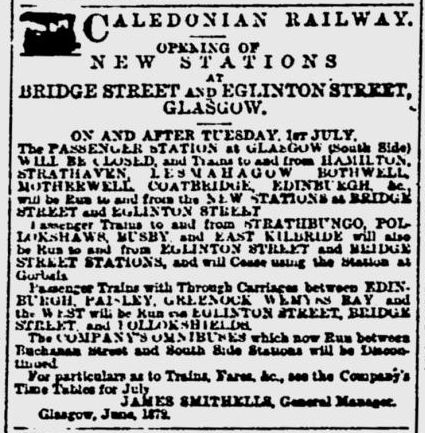
This copy of the notice was taken from the Glasgow Herald of 1st July 1879. It informed passengers using the Caledonian Railway’s services to Edinburgh via the major Lanarkshire towns, and to East Kilbride via Pollokshaws, of the new stations which were due to open on that day.
These services had previously terminated at Southside Station, Gorbals, which closed the same day.
The trains which had terminated at Southside Station now connected with other lines on the southern approaches to the city which had terminated at the original Bridge Street Station.
The notice advised that passengers on the trains from Edinburgh and Lanarkshire could join the trains heading for Gourock and Wemyss Bay, the ports for the Clyde Coast steamers.
The Gourock and Wemyss Bay trains continued to terminate at Bridge Street after the opening of Central Station in 1st August 1879.
Eglinton Street Station first appears in the Glasgow Post Office Directory for the years 1881/ 1882, with the address of 580 Eglinton Street.
In 1900 the Glasgow and South Western Railway opened a completely different station, also called Eglinton Street, serving the lines into St Enoch Station. This station’s name was changed to Cumberland Street in 1924 to avoid confusion with the Caledonian Railway's station situated further south, nearer Eglinton Toll.
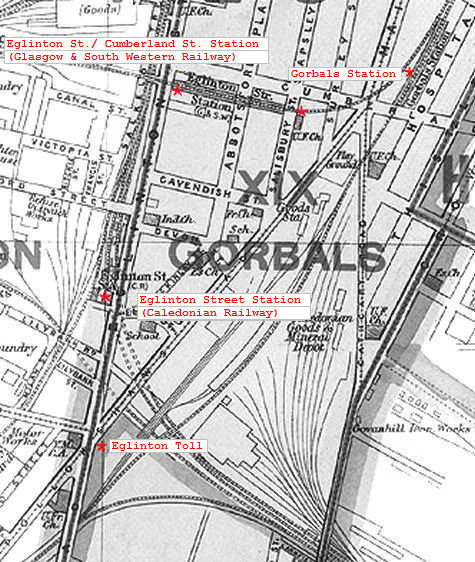
The map below was surveyed in the early 1890's and shows the entrance to the Caledonian Railway's Eglinton Street Station from Wellcroft Street.
The waiting rooms and ancilliary buildings to the right of the entrance stairs, closest to Eglinton Street, were later replaced with additional track heading for Lanarkshire and the South through a new tunnel under Eglinton Street.

An aerial view from the south shows the situation as at today.
The twin stair towers are still in place beside the car showroom which now occupies the site of Wellcroft Street. The later track can be seen entering the additional tunnel to the right of the original.
The track furthest to the left is used for local services heading towards Muirhouse Junction in Pollokshields.

An aerial view from the north shows the second tunnel, to the left of the stair towers and the remains of the station buildings and platforms.
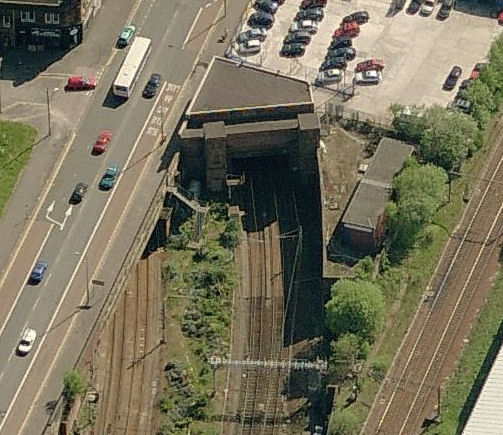
The additional track to the left passing the overgrown site of the station platforms, before entering the second tunnel under Eglinton Street.
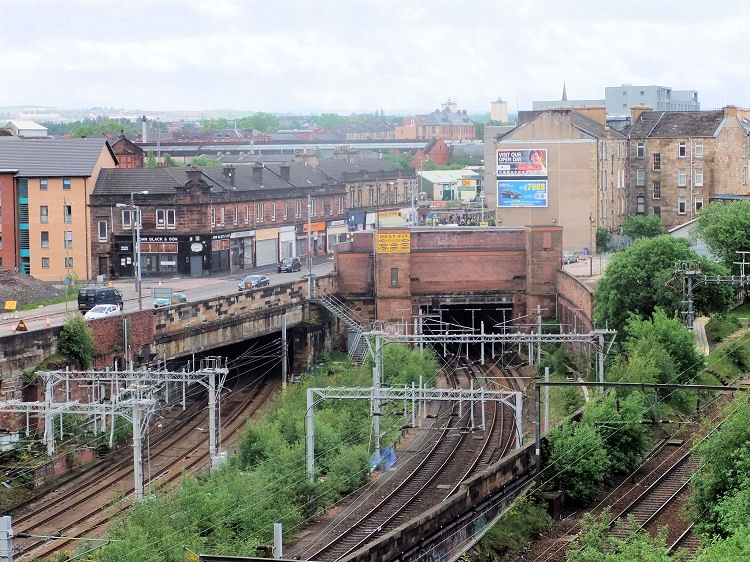
Red brick wall showing site of access to platforms from Eglinton Street, prior to closure of station in 1965.
There was an enclosed timber and glass footbridge at this entrance, with staircases leading to the station platforms.
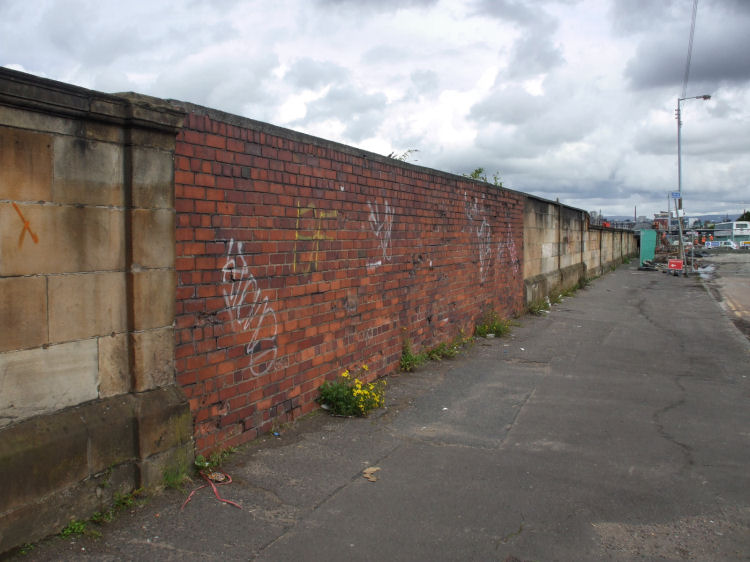
This "then and now" view of the platforms and station buildings at Eglinton Street, shows the timber and glass footbridge and staircases leading down to the cast iron framed platform canopies.
Both pictures were taken looking over the wall at the road bridge linking Devon Street with Kilbirnie Street.
The 1960's view was taken from a photograph by Phil McCafferty who kindly supplied the image.
Despite all the demolitions in the area, you can still recognise a few of the surviving buildings in the background.
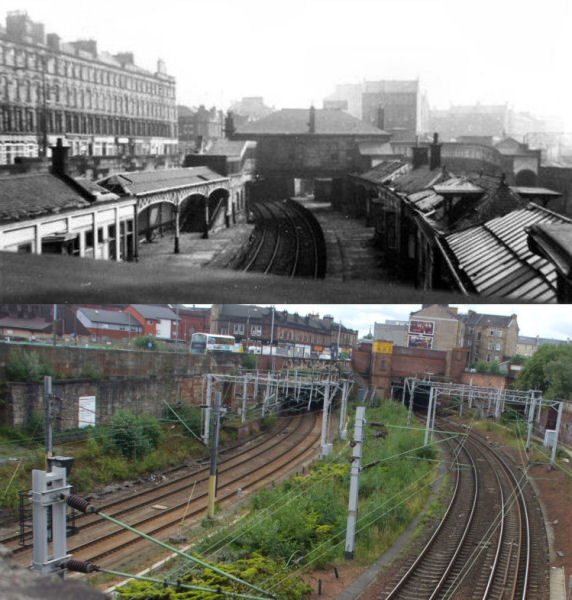
View of remains of Eglinton Street Station from the west.
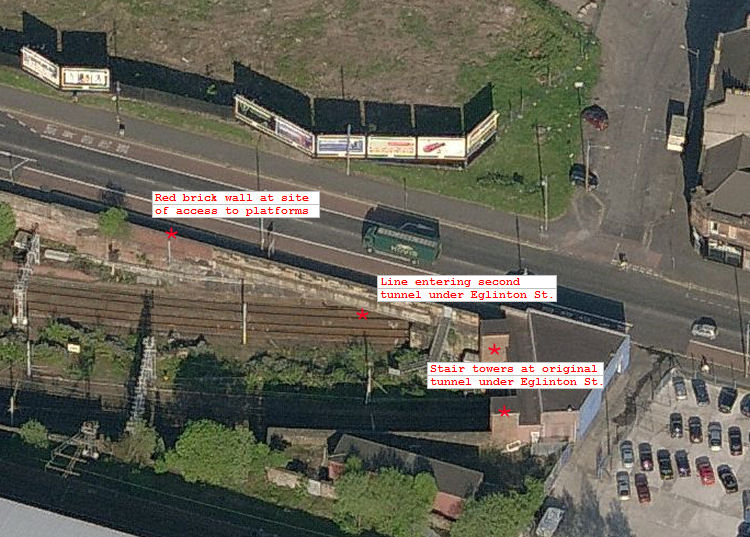
A Virgin train, en route to London, passing through the site of platforms at Eglinton Street Station and into the original tunnel under Eglinton Street between the stair towers.
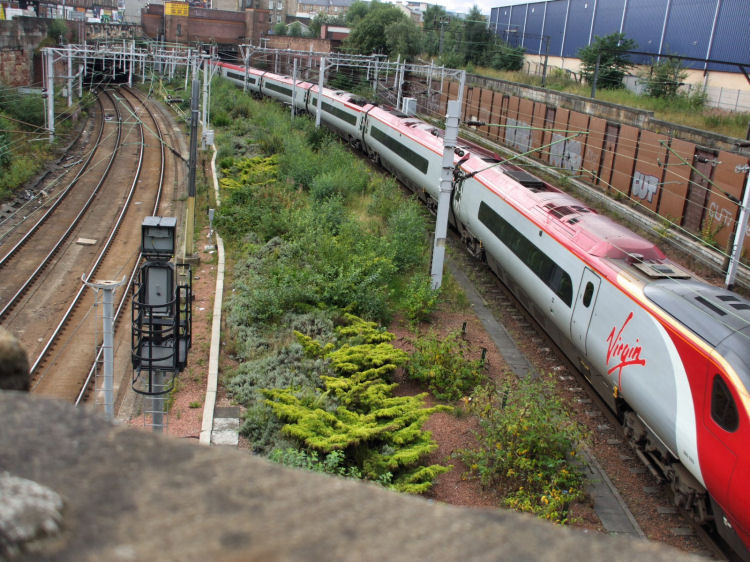
Another Virgin train, heading for Central Station, after emerging from the later tunnel.
Eglinton Street follows a straight path towards Eglinton Toll, where Victoria Road continues towards Queens Park in the far distance.
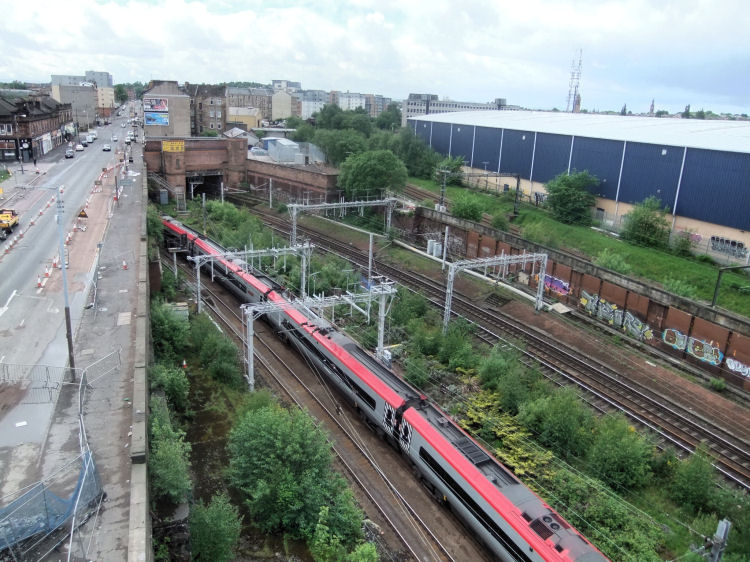
The site of main line platforms at Eglinton Street Station.
The track followed by local services towards Pollokshields is situated behind the brick wall towards the top of the picture.
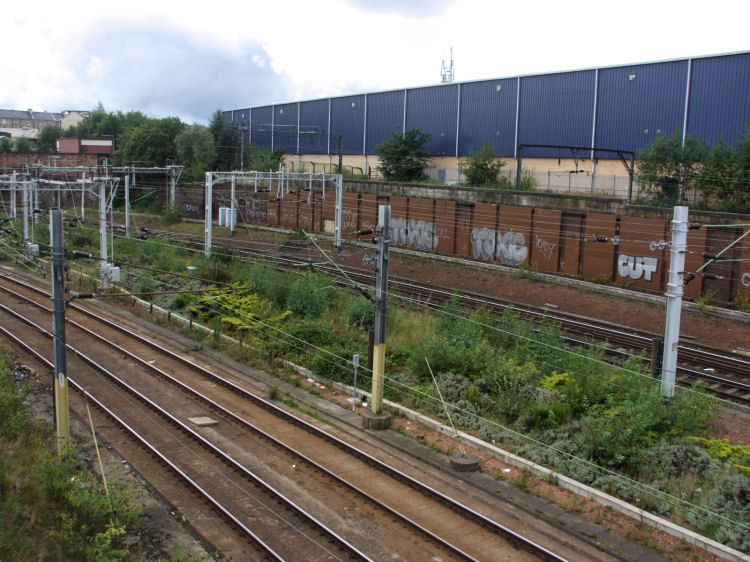
Remains of platform at Eglinton Street Station.
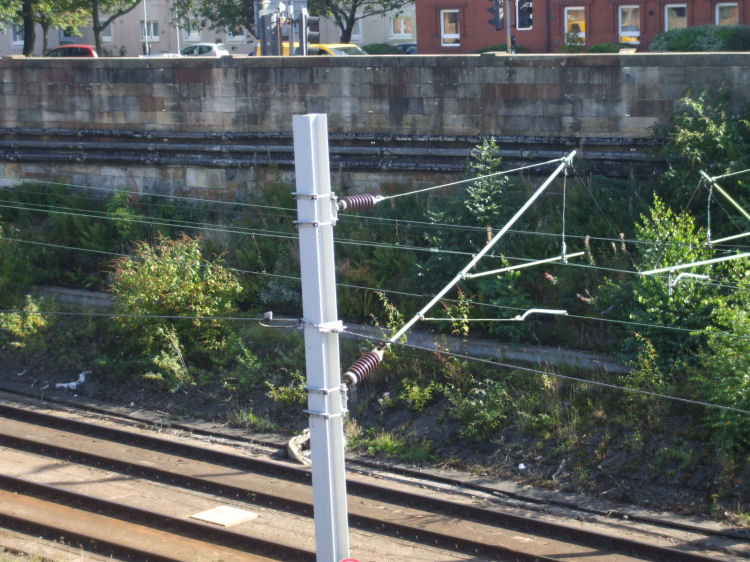
Looking back from Eglinton Street Junction towards the city centre.
The deisel train approaching is heading towards Muirhouse Junction, Pollokshields, and then on to Strathbungo Junction, where it will split from the south side electric suburban services.

There was a fatal collision between two trains at Eglinton Street Station in March 1883, shortly after the station had opened.
The extract below is from The People's History of Glasgow, published in 1899.

The Glasgow Herald of 20th March 1883,the day after the train crash, reported that 3 of the deaths had occured at the scene.
The article then went on to describe the causes of the incident in great detail.
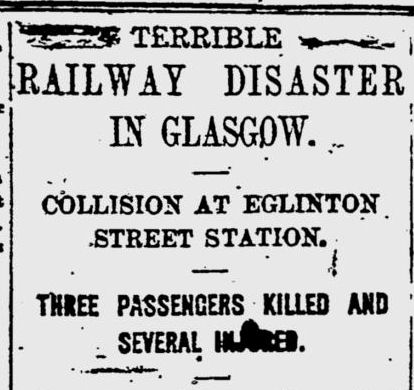
The crash involved the 6:15pm train from Central Station to East Kilbride and the 5pm train from Edinburgh to Glasgow Central which had stopped at Eglinton Street Station, a popular stage for passengers changing trains before reaching the city centre.
The driver of the Edinburgh train, John Woods, a Welshman who had been taken on during the rail workers strike, failed to heed the signal against the train leaving the station and proceeded towards Central Station.
The East Kilbride train had left Central on time at 6:15pm and had a clear signal at Bridge Street to proceed to Eglinton Street. The driver, David Sharp, had cut off steam and was slowing down when he crashed into the Edinburgh train which was getting up steam.
The drivers and firemen of both trains survived the crash, having been violently thrown from their engines. The dead and injured were taken to the waiting rooms at Eglinton Street Station.
The third class carriage nearest the engine of the East Kilbride train ended up under the brake van. The carriage contained a number of trapped passengers as well as the body of a 15 year old boy, John Bryden Halbert, of Carment Drive, Shawlands, who was identified by his season ticket.
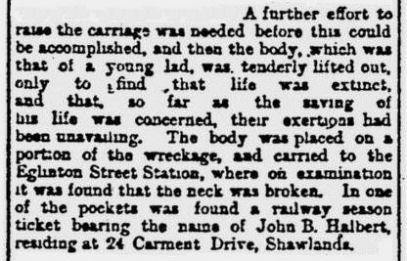

Young John, who had been returning home from his work as a clerk is still remembered in Shawlands, with Halbert Street named after him.
View from Eglinton Street of the twin stair towers which stood at the station entrance at Wellcroft Street.
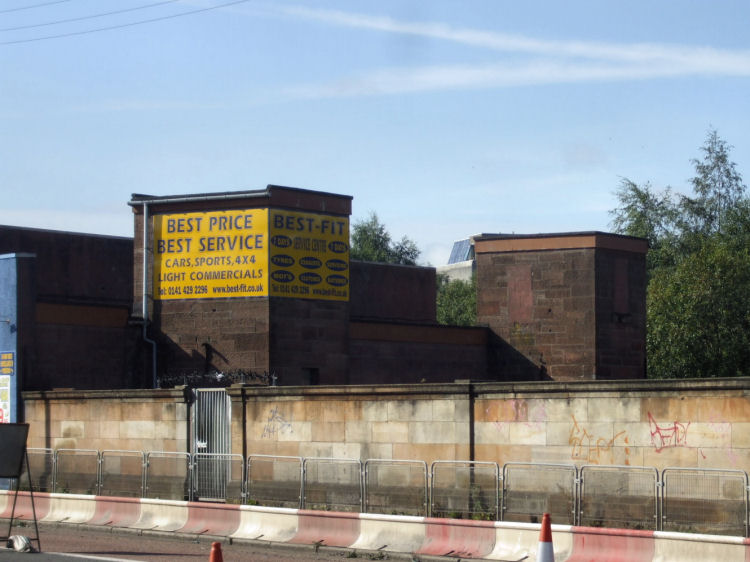
View of the twin stair towers at Eglinton Street Station from the north.
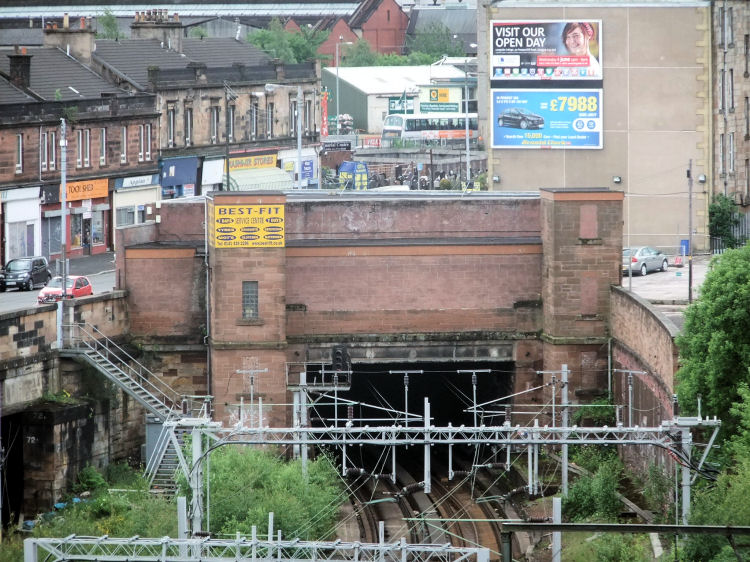
A map of the lower part of Eglinton Street in the late 1850's, before the construction of Eglinton Street Station.
Govan Poorhouse and the Wellcroft Bowling Greens and Curling Pond had to be removed to make way for the new railway and station buildings.
Wellcroft Bowling Club moved to their present site at Queens Park in 1876, 3 years before the completion of the first phase of Central Station.
The club was adjacent to the Caledonian Railway lines from Lanarkshire to the harbourside and Shields Junction.
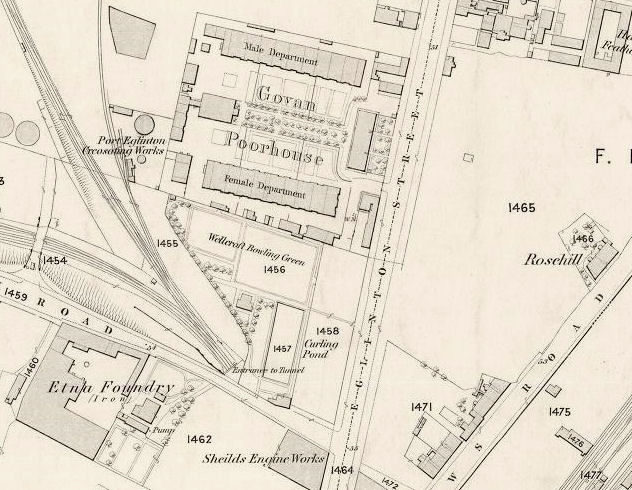
An aerial view of the area south of the former Eglinton Street Station, showing where the trains using the West Coast Main line emerge from the tunnels.
A third tunnel, at the bottom of the picture, connects trains from Lanarkshire and the south with Shields Junction.

![]()
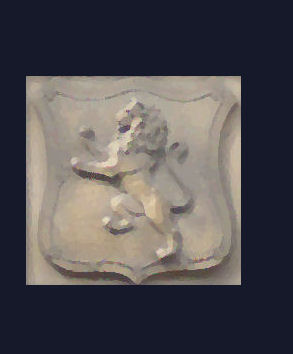 |
| |
|
|
| |
|
|
| |
|
|
| |
|
|
| |
|
|
| |
|
|
| |
|
|
|
|
|
All original artwork, photography and text © Gerald Blaikie
Unauthorised reproduction of any image on this website is not permitted.